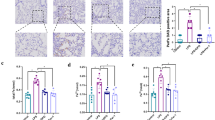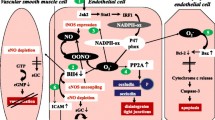Abstract
The protective action of deferoxamine, an iron chelator, against reperfusion injury following hypothermic preservation was investigated in the Langendorff-perfused hearts of neonatal rabbits. Left ventricular function and radical generation were used as parameters to evaluate functional and metabolic changes. The free radicals in coronary effluents were measured with an electron spin resonance spectroscope using a spin trapping agent, 5,5-dimethyl-1-pyrroline-N-oxide (DMPO). The hearts were preserved in cold St. Thomas solution at 4°C for 6 h following cardiac arrest, then reperfused with oxygenated Krebs-Henseleit solution in a control. Deferoxamine (100 μM) was added to the perfusate just prior to reperfusion in group I, and 3 min after the start of reperfusion in group II. In the control group, the left ventricular developed pressure (LVDP) after 30-min reperfusion recovered up to 43.5±3.1% (mean ± SD, n=5) the preischemic value. Group I showed a significant improvement in LVDP recovery after 30-min reperfusion at 57.1±3.1% (P<0.01 vs control), but group II did not (47.5±2.3%). When a burst of DMPO-OH signals was detected during the initial 5 min of reperfusion, the signal intensity in group I was significantly reduced to about 35–40% of the control value. Group II showed a similar intensity to the control group. Thus, we conclude that deferoxamine may exert a protective action against the dysfunction of neonatal mammalian hearts induced by preservation-reperfusion through an inhibition of iron-catalyzed radical formation.
Similar content being viewed by others
References
Hess ML, Manson NH (1984) Molecular oxygen: Friend or foe.2 The role of the oxygen free radical system in the calcium paradox, the oxygen paradox, and ischemia/reperfusion injury. J Mol Cell Cardiol 16:969–985
Halliwell B (1978) Superoxide-dependent formation of hydroxyl radicals in the presence of iron chelates. FEBS Lett 92:321–326
Halliwell B, Gutteridge JMC (1984) Oxygen toxicity, oxygen radicals, transitional metals, and disease. Biochem J 219:1–14
Ambrosio G, Zweier JL, Jacobus WE, Weisfeldt ML, Flaherty JT (1987) Improvement of postischemic myocardial function and metabolism induced by administration of deferoxamine at the time of reflow: The role of iron in the pathogenesis of reperfusion injury. Circulation 76:906–915
Badylak SF, Simmonds A, Turek J, Babbs CF (1987) Protection from reperfusion injury in the isolated rat heart by post ischemic deferoxamine and oxypurinol administration. Cardiovasc Res 21:500–506
Otani H, Engelman RM, Rousou JA, Breyer RH, Lemeshow S, Das DK (1987) The mechanism of myocardial reperfusion injury in neonates. Circulation [Suppl V] 76:V161-V167
Gerdin E, Tyden O, Eriksson UJ (1985) The development of antioxidant enzymatic defense in perinatal rat lung: Activities of superoxide dismutase, glutathione peroxidase, and catalase. Pediatr Res 19:687–691
Gerald MR, Rauckman EJ (1981) Spin trapping of free radicals during hepatic microsomal lipid peroxidation. Proc Natl Acad Sci USA 78:7346–7349
MacCay PB, Lai EK, Poyers JL (1984) Oxygen- and carbon-centered free radical formation tetrachloride metabolism. J Biol Chem 259:2135–2143
Menasche P, Grousset C, Gauduel Y, Piwnica A (1986) A comparative study of free radical scavengers in cardioplegic solutions. J Thorac Cardiovasc Surg 92:264–271
Shlafer M, Kane PF, Kirsh MM (1982) Superoxide dismutase plus catalase enhances the efficacy of hypothermic cardioplegia to protect the globally ischemic, reperfused heart. J Thorac Cardiovasc Surg 83:830–839
Jurmann MJ, Schaefers HJ, Dammenhayn L, Harverich A (1988) Oxygen-derived free radical scavengers for amelioration of reperfusion damage in heart transplantation. J Thorac Cardiovasc Surg 95:368–737
Bando K, Tago M, Teramoto S (1988) Prevention of free radical-induced myocardial injury by allopurinol. J Thorac Cardiovasc Surg 95:465–473
Menasche P, Grousset C, Mouas C, Piwnica A (1990) A promising approach for improving the recovery of heart transplants. J Thorac Cardiovasc Surg 100:13–21
Parrish MD, Payne A, Fixler DE (1987) Global myocardial ischemia in the newborn, juvenile, and adult isolated isovolumic rabbit heart. Circ Res 61:609–615
Grice WN, Konishi T, Apstein CS (1987) Resistance of neonatal myocardium to injury during normothermic and hypothermic ischemic arrest and reperfusion. Circulation 76; V-150–V-155
Yano Y, Braimbridge MV, Hearse DJ (1987) Protection of the pediatric myocardium. J Thorac Cardiovasc Surg 94:887–889
Keberle H (1964) The biochemistry of deferoxamine and its relation to iron metabolism. Ann NY Acad Sci 119:758–768
Thomas MJ, Mehl KS, Pryor WA (1978) The role of the superoxide anion in the xanthine oxidase-induced autoxidation of linoleic acid. Biochem Biophys Res Commun 83:927–932
Laub R, Schneider YJ, Octave JN, Trouet A, Crichton RR (1985) Cellular pharmacology of deferoxamine B and derivatives in cultured rat hepatocytes in relation to iron mobilization. Biochem Pharm 34:1175–1185
Tanaka M, Hashimoto Y, Minezaki K, Shinozaki Y, Nakazawa H, Tsukamoto H, Komatsu N, Watanabe K (1990) Localization of exogenously administered SOD in myocardium. Jpn Circ J 54:857
Zweier JL (1988) Measurement of superoxide-derived free radicals in the reperfused heart. J Biol Chem 263:1353–1257
Garlick PB, Davis MJ, Hearse DJ (1987) The direct detection of free radicals in the reperfused rat heart using electron spin resonance spectroscopy. Circ Res 61:757–760
Bolli R, Patel BS, Jeroudi MO, Li X, Triana JF, Lai EK, McCay PB (1990) Iron-mediated radical reactions upon reperfusion contribute to myocardial “stunning”. Am J Physiol 259:H1901-H1911
Chambers DE, Parks DA, Patterson G, Roy R, McCord JM, Yoshida S, Parmley LF, Downey JM (1985) Xanthine oxidase as a source of free radical damage in myocardial ischemia. J Mol Cell Cardiol 17:145–152
Singal PK, Kapur KS, Dhillon RE, Dhalla NS (1982) Role of free radicals in catecholamine-induced cardiomyopathy. Can J Physiol Pharmacol 60:1390–1397
Boveris A, Cadenas E (1975) Mitochondrial production of superoxide anion and its relationship to the antimycin insensitive respiration. FEBS Lett 54:311–314
Kramer R, Seligmann B, Mullane KM (1990) Polymorphonuclear leukocytes reduce cardiac function in vitro by release of H2O2. Am J Physiol 258:H1847-H1855
Author information
Authors and Affiliations
Rights and permissions
About this article
Cite this article
Katoh, S., Toyama, J., Kodama, I. et al. Deferoxamine reduces the reperfusion injury in isolated neonatal rabbit hearts after hypothermic preservation. Surg Today 23, 424–429 (1993). https://doi.org/10.1007/BF00309501
Received:
Accepted:
Issue Date:
DOI: https://doi.org/10.1007/BF00309501




